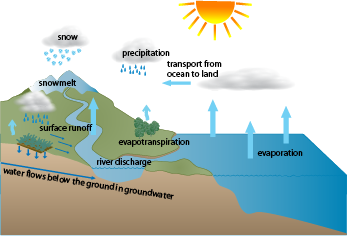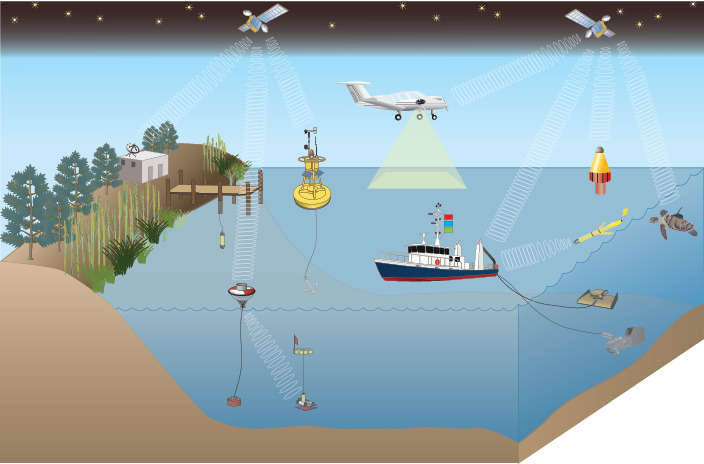Why do we observe the ocean?
Although we live on land and think about the world from this perspective, the Earth is a blue planet when viewed from space. The ocean occupies over 70% of the Earth’s surface and therefore affects all of its inhabitants. Whether you live near the coast or in the heartland of the nation, the world’s oceans affect you. Water and food supplies, storms, and droughts all are determined by the interaction of the oceans with the atmosphere. The ocean and the atmosphere interact by exchanging water, heat, and nutrients. Here we explore the oceans through the eyes of ocean observing systems, which are an array of instruments deployed in the oceans that provide information in real-time.
How do we observe the ocean?
People have studied the ocean for a long time. In the past, our knowledge about the ocean came from measurements made from ships. Ocean observing systems now use many different types of technology, which sense the “pulse” of the ocean by collecting data continuously. This information is posted on the internet and allows scientists to quickly detect changes in the oceans. Being able to quickly see changes also allows scientists to understand why changes are happening, and even to predict them.
These systems include a variety of instruments that measure temperature, currents, wave height, salinity, and other parameters. Types of observing systems include satellites, which sense the ocean from far above, moored (stationary) buoys, which communicate information directly to land-based computers and are accessed via the Internet, and roving sensors (sonars), which can travel remotely through the water and radio information to receivers. You can access this exciting information to explore the effect of the ocean on climate and weather or locate sea creatures based on temperature, all through the eyes of ocean observing systems.
Activity: Exploring Ocean Observing Systems
Researchers use various sensors to measure the ocean conditions
Mouseover to read about each sensor




